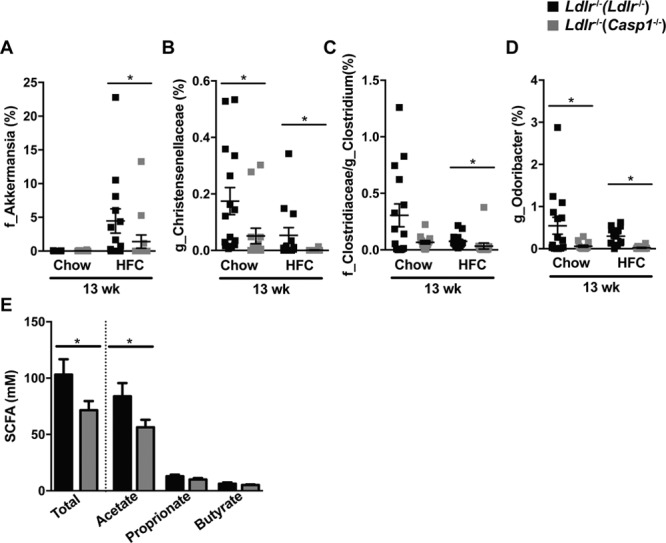Figure 4.

Casp1−/−-induced alterations in the gut microbiota. Female Ldlr−/− mice were exposed to fecal microbiota derived from Casp1−/− or Ldlr−/− mice by means of cohousing for 13 wk while fed chow and high-fat cholesterol (HFC) diet. A–D, Abundance of microbiota taxonomies based on LEfSe analysis of 16S-rDNA (ribosomal DNA)-encoding sequences in feces collected at time of sacrifice. A, Family Akkermansia. B, Genus Christensenellaceae. C, Genus Clostridium. D, Genus Odoribacter. E, Cecum concentration of propionate, acetate, and butyrate in HFC-fed mice. A–D, Chow: Ldlr−/−(Ldlr−/−) mice, n=15; Ldlr−/−(Casp1−/−) mice, n=14; HFC: Ldlr−/−(Ldlr−/−) mice, n=13; Ldlr−/−(Casp1−/−) mice, n=14. E, Ldlr−/−(Ldlr−/−) mice, n=8; Ldlr−/−(Casp1−/−) mice, n=9. Data represent mean±SEM. *P<0.05 as determined by Kruskal-Wallis test (A–D) and unpaired 1-tailed Student t test (E). SCFA indicates short-chain-fatty acid.
